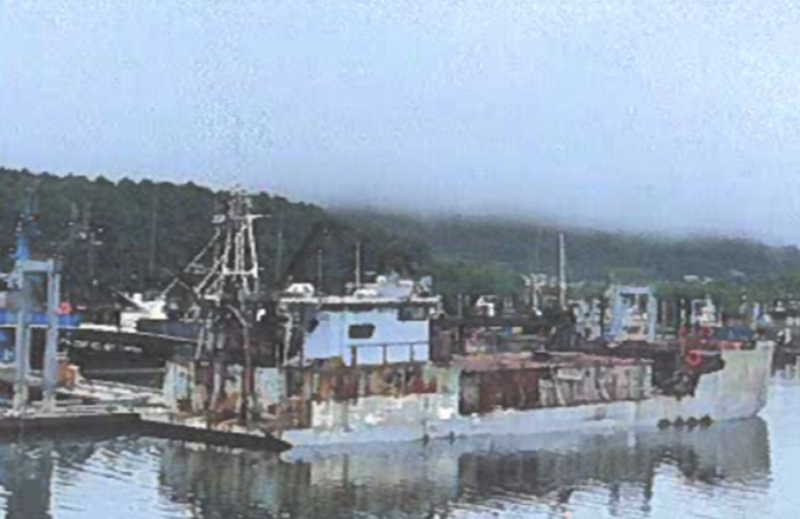A World War II-era landing craft, employed for 80 years as a workboat and fish tender in Alaska, sank in November 2024 when watertight doors in the engine room and companionway allowed flooding below deck, the National Transportation Safety Board reported.
The 110’ Cape Douglas was transiting Chiniak Bay to dump fish byproduct Nov. 6, 2024, near Kodiak, Alaska, when vessel began to flood below deck. The captain and crewmember were unable to control the flooding and abandoned the vessel into a towed skiff, where they were rescued by a Good Samaritan vessel.
Around 7 a.m. the captain and deckhand had moved the vessel to a nearby fish meal plant (just outside of the to begin loading fish byproduct – about 30 tons loaded by dump trucks into two bins secured to the forward deck. The
At 11 a.m. loading was completed and the captain and deckhand got the Cape Douglas underway from the
At 12:40 p.m., the Cape Douglas approached the area of the disposal site, where
The captain told investigators that all watertight doors remained open during transits (as was typical) to help with ventilation in the engine room. The Cape Douglas sank with an estimated 400-600 gallons of diesel fuel on board. It was not recovered and declared a total loss valued at $250,000.
Investigators found that the flooding might have been contained if the watertight doors were secured. “Maintaining watertight integrity of a vessel is a fundamental principle of safe operations on water,” the report said. “Within the hull, watertight bulkheads and watertight doors are designed to prevent progressive flooding by containing any incoming water to the compromised space.”
Before the sinking, the vessel had visual signs of rust and deterioration, and, along with documented hull wastage, suggested a general degradation of the vessel and onboard systems, such as the deck washdown system. About seven months before the sinking, the City of Kodiak harbormaster raised concerns about the vessel’s condition.
The NTSB concluded the probable cause of the National Transportation Safety Board determines that the probable cause of the Cape Douglas sinking “was flooding of a below-deck passageway or the pump room from an undetermined failure in the vessel’s deck washdown system. Contributing to the sinking were open watertight doors, which allowed progressive flooding into the engine room and other below-deck spaces.”







